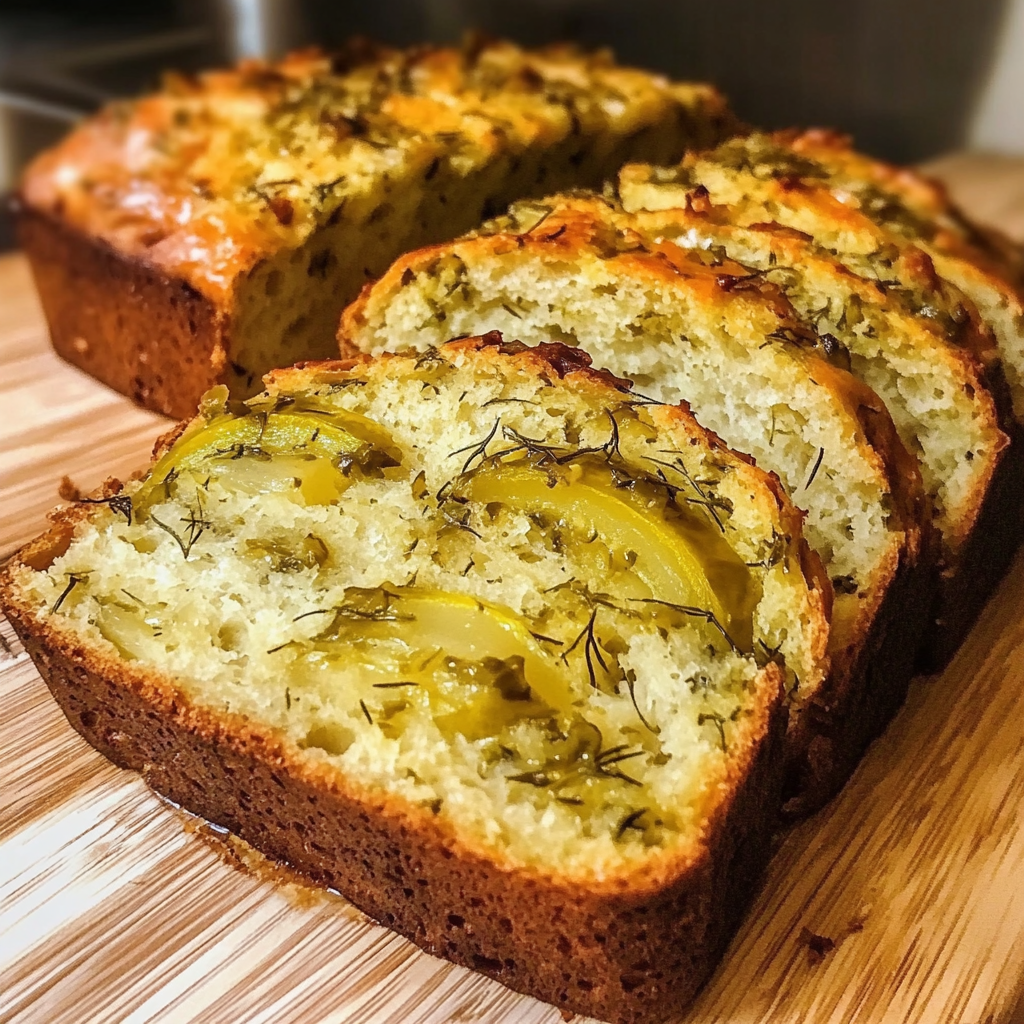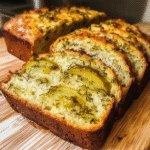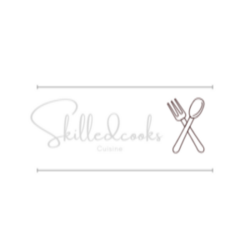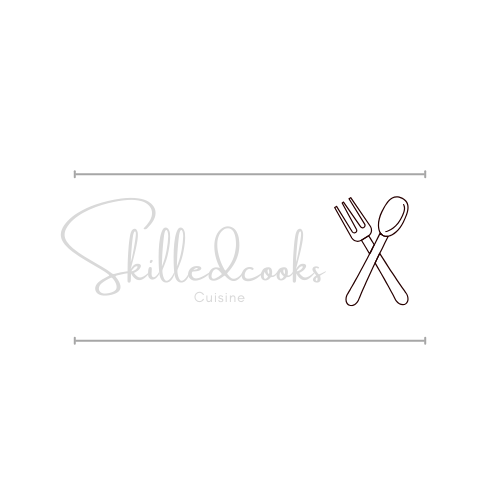Introduction to Dill Pickle Bread
If you’re someone who loves tangy, savory flavors and enjoys baking from scratch, dill pickle bread might just become your new obsession. This unique loaf is anything but ordinary—it’s packed with the briny boldness of dill pickles and the herbaceous flair of dill weed, creating a bread that’s zesty, aromatic, and full of personality. Imagine biting into a warm slice and getting that subtle crunch of chopped pickles mixed with the comforting softness of freshly baked bread.
Ideal for sandwiches, toast, or simply snacking straight from the oven, dill pickle bread is a conversation starter and a taste bud teaser. Unlike traditional white or wheat breads, it offers a delightful tang that pairs beautifully with hearty fillings or creamy spreads. Whether you use a bread machine or bake it by hand, this bread adds excitement to your kitchen and a pickle-perfect twist to your baking routine.
This easy homemade bread is perfect for grilled sandwiches, dipping into soups, or pairing with unique sides like this refreshing beet salad with feta, cucumbers, and dill — a natural complement to the herbaceous notes in dill bread.
🛒 Ingredients List
Here’s what you’ll need for the basic loaf:
- 1 cup pickle juice (or ½ juice + ½ warm water)
- 1 chopped dill pickle
- 1 tbsp butter (or olive oil)
- 1 tbsp dried minced onion
- 1 tsp dried parsley
- ½ tsp dried dill weed
- 3⅛ cups bread flour
- 2 tsp active dry yeast
Optional:
- 1 tsp sugar (to boost yeast)
- Shredded cheddar for cheesy bread
- Garlic powder for depth
👩🍳 How to Make Dill Pickle Bread
Making dill pickle bread is surprisingly simple, and you can choose between two main methods: using a bread machine or baking it by hand in the oven. Each has its perks, and both produce a flavorful, savory loaf that’s packed with herby pickle goodness.
🔹 Bread Machine Method
This is the easiest and most hands-off approach:
- Add all ingredients to the bread machine pan in the order recommended by your manufacturer.
- Use the white bread setting with a medium crust.
- Let the machine knead, rise, and bake your loaf.
- Once done, remove the bread and let it cool completely before slicing.
Tip: Use 100% pickle juice instead of water for stronger flavor, and ensure pickles are finely chopped to prevent clogging the paddle.
🔹 Oven-Baked Method (By Hand)
Ideal for those who enjoy the traditional knead-and-rise process:
- Proof yeast in warm pickle juice (about 110°F) with 1 tsp sugar for 10 minutes.
- Mix in chopped pickles, butter, and dry herbs.
- Add bread flour gradually and knead until dough is smooth and elastic (10–12 minutes).
- Place dough in a greased bowl, cover, and let it rise for 1 hour or until doubled in size.
- Punch down, shape into a loaf, and place in a greased pan.
- Let rise again for 30–45 minutes.
- Bake at 375°F (190°C) for 35–40 minutes, or until golden brown and hollow-sounding when tapped.
No matter your method, the result is a delightfully zesty loaf with a tender crumb and distinctive pickle-forward flavor.
💡 Tips for Best Results
- Use all pickle juice for bolder flavor.
- Don’t add extra salt — the brine handles it.
- Drain pickles on paper towels before adding.
- Add sugar if your dough struggles to rise.
- Try whole grain flour for a fiber boost — as seen in this nutritious sweet condensed milk bread.
🧂 Why Dill Pickle Bread Works
There’s science behind the flavor! Pickle brine isn’t just for tang — it also helps tenderize the crumb and feeds yeast with its acidity and salt balance. It’s similar to the way tangy ingredients enhance other savory bakes like this beautifully golden cheese bread, which balances richness with herbaceous notes.

🥪 Serving Ideas
Dill pickle bread goes with everything savory:
- Pastrami or turkey sandwiches
- Dipped into spinach artichoke dip
- Served with creamy soups
- Toasted with garlic butter
Or try it alongside this protein-packed tuna garbanzo bean salad for a light but flavorful lunch.
🔀 Flavor Variations
- Add cheddar or Swiss
- Use spicy or sweet pickles
- Mix in garlic powder or onion flakes
- Go vegan with olive oil instead of butter
🥗 Nutritional Information & Health Considerations
Dill pickle bread offers a flavorful alternative to standard white bread, but it’s helpful to understand its nutritional profile—especially if you’re watching sodium or carbs. On average, a slice contains:
- Calories: ~140
- Carbohydrates: ~26g
- Protein: ~4g
- Fat: ~1–2g
- Sodium: ~200–300mg (depending on pickle juice used)
The high sodium content is the main consideration, since pickle juice and chopped pickles naturally bring salt to the mix. If you’re on a low-sodium diet, use reduced-sodium pickles or dilute the brine with water.
To boost nutrition, swap some bread flour with whole wheat flour for added fiber, or incorporate seeds like flax or chia. For dairy-free versions, replace butter with olive oil.
This bread is vegan-friendly if made without dairy, and it fits into high-flavor, lower-fat meal plans when enjoyed in moderation. Just be mindful of portion sizes and pair it with lean proteins and fresh veggies for balance.
🧑🍳 How to Customize Your Dill Pickle Bread
One of the best things about dill pickle bread is how easy it is to make it your own. Whether you want to boost the flavor, add texture, or tailor it to dietary needs, there are endless ways to customize this zesty loaf.
🔹 Flavor Add-Ins
- Cheese: Add ½ cup of shredded cheddar, Swiss, or mozzarella for a savory, melty touch.
- Garlic: Mix in 1 tsp of garlic powder or 1–2 minced cloves for a bolder, aromatic bite.
- Spicy Kick: Dice a few pickled jalapeños or add red pepper flakes for a spicy variation.
- Sweet & Tangy: Use sweet pickles instead of dill for a sweeter, more complex flavor profile.
🔹 Texture Enhancers
- Seeds: Add sunflower seeds, sesame seeds, or poppy seeds to the dough or sprinkle on top for crunch.
- Grated Veggies: Fold in grated carrot or zucchini for moisture and nutrition—just squeeze out excess liquid first.
🔹 Health-Conscious Swaps
- Whole Wheat Flour: Replace up to half the bread flour with whole wheat to add fiber and a nuttier taste.
- Vegan Option: Swap the butter for olive oil or vegan margarine to make it dairy-free.
- Low-Sodium: Use reduced-sodium pickles and dilute the brine to lower the salt content.
🔹 Presentation Tips
- Braided Loaf: Divide the dough into strands and braid before baking for a rustic look.
- Mini Loaves or Rolls: Perfect for appetizers or individual servings.
Get creative—each tweak brings out a new side of this tangy, herb-packed bread!
Print
Dill Pickle Bread
- Total Time: 55 minutes
- Yield: 1 standard loaf (about 10–12 slices) 1x
Description
A soft, tangy white bread infused with dill pickles, pickle juice, and herbs—perfect for savory sandwiches or snacking.
Ingredients
- 1 cup pickle juice (or ½ cup juice + ½ cup warm water)
- 1 medium dill pickle (finely chopped)
- 1 tbsp softened butter or olive oil
- 1 tbsp dried minced onion
- 1 tsp dried parsley
- ½ tsp dried dill weed
- ¼ tsp salt (optional, based on brine)
- 3⅛ cups bread flour
- 2 tsp active dry yeast
- Optional 1 tsp sugar for better rise
- Optional ½ cup shredded cheddar or 1 clove minced garlic
Instructions
- Proof the yeast in warm pickle juice with sugar for 10 minutes (only for manual method).
- Mix in chopped pickles, butter/oil, onion, parsley, and dill.
- Add bread flour and mix until a sticky dough forms.
- Knead until smooth and elastic (10–12 minutes by hand).
- Let rise in a greased bowl, covered, for 1 hour.
- Punch down and shape into a loaf; place in a greased pan.
- Let rise again for 30–45 minutes.
- Bake at 375°F (190°C) for 35–40 minutes until golden.
- Cool completely before slicing.
Notes
-
For a stronger flavor, use 100% pickle juice and double the dill weed.
-
Make it vegan by swapping butter with olive oil.
-
Avoid adding extra salt unless using low-sodium pickles.
-
Add-ins like cheese, garlic, or jalapeños can enhance the flavor.
-
This bread pairs well with pastrami, tuna salad, or creamy dips.
- Prep Time: 15 minutes
- Cook Time: 40 minutes
- Category: Bread, Side Dish
- Cuisine: American
Nutrition
- Calories: 140
❗ Common Pitfalls
Even though dill pickle bread is fairly simple to make, a few common mistakes can affect the final outcome. Fortunately, most are easy to fix once you know what to look for.
1. Bread not rising properly:
This is often due to using pickle juice that’s too hot, which can kill the yeast. Make sure the liquid is warm (around 105–110°F), not hot. Also, salt from the pickle brine can inhibit yeast if added too early. Always proof the yeast separately with sugar before combining it with the other ingredients.
2. Dense or heavy texture:
Not kneading long enough can lead to a tight crumb. Knead the dough until it’s smooth and elastic—usually around 10–12 minutes by hand or 8 minutes with a stand mixer. Also, avoid overloading the dough with large chunks of pickles, which can interrupt gluten development.
3. Too salty:
Since pickle juice already contains salt, skip adding additional salt unless you’re using a small amount of juice. Taste your brine and adjust accordingly.
4. Weak pickle flavor:
Use 100% pickle juice, double the dill weed, or blend the pickles into the liquid for more consistent flavor distribution.
A few small adjustments can make a big difference in this briny, flavorful loaf! Discover choosing the right flour for bread
📜 The History & Origin of Pickle Bread
While dill pickle bread might feel like a modern foodie invention, its roots are inspired by centuries-old practices of using fermented brines and herbs in baking. Historically, bakers have incorporated sour or tangy elements—like buttermilk, sauerkraut, or yogurt—to enhance flavor and improve texture. The idea of using pickle juice and chopped pickles likely evolved from resourceful home cooks finding ways to reduce waste and infuse extra flavor into everyday loaves. With the rise of artisanal baking and experimental flavors, pickle bread has gained popularity among adventurous bakers looking to create a savory, herb-packed twist on classic white bread.
🛠 Reader-Recommended Tweaks
Bakers who’ve tested dill pickle bread have come up with clever tweaks to enhance flavor and texture. A popular tip is to use 100% pickle juice for maximum tang, while others blend the pickles into the liquid to avoid chunky bites. For extra moisture and richness, several readers swap butter with a tablespoon of olive oil or add a dollop of sour cream.
If you like bold flavors, mix in garlic powder, shredded cheddar, or even jalapeños for a spicy kick. One creative variation uses sweet pickles instead of dill for a milder, sweeter twist on this zesty classic.
🙋♀️ FAQs
What does dill pickle bread taste like?
Dill pickle bread has a unique flavor that’s tangy, savory, and slightly salty with subtle herbal notes from dill weed and onion. The chopped pickles provide occasional bursts of briny flavor, making each bite distinct.
Can I use pickle juice in other bread recipes?
Yes! Pickle juice can be a flavorful substitute for water in many savory bread recipes. It not only adds a zingy taste but also helps condition the dough thanks to its acidity and salt content.
How do I make my bread more “pickle-y”?
For a stronger pickle flavor, use 100% pickle juice, increase the dill weed, and consider adding more finely chopped or blended pickles. Letting the flavors sit overnight before baking can also enhance the briny punch.
Is dill pickle bread good for sandwiches?
Absolutely. Its flavor complements deli meats like pastrami, corned beef, turkey, and even tuna. It also makes a standout grilled cheese or breakfast toast with cream cheese.
What are some variations of pickle-flavored bread?
Popular variations include adding shredded cheddar, minced garlic, jalapeños for heat, or even using sweet pickles for a sweet-savory contrast. You can also experiment with different herbs like chives or thyme.
Is this bread good with spreads?
It’s amazing with cream cheese, hummus, or garlic butter — try it next to this creamy cottage cheese and chickpea salad.
✅ Final Thoughts
If you love bold flavors and enjoy baking outside the box, dill pickle bread is a must-try. It’s a playful, savory twist that turns everyday ingredients into something unforgettable. With its briny tang, soft crumb, and herbaceous aroma, this loaf is as versatile as it is flavorful—perfect for sandwiches, dipping, or simply enjoying warm with butter.
Whether you use a bread machine or bake it by hand, the process is approachable and rewarding. Don’t be afraid to experiment with variations like garlic, cheese, or sweet pickles. Give it a go—you might just find your new favorite homemade bread.



